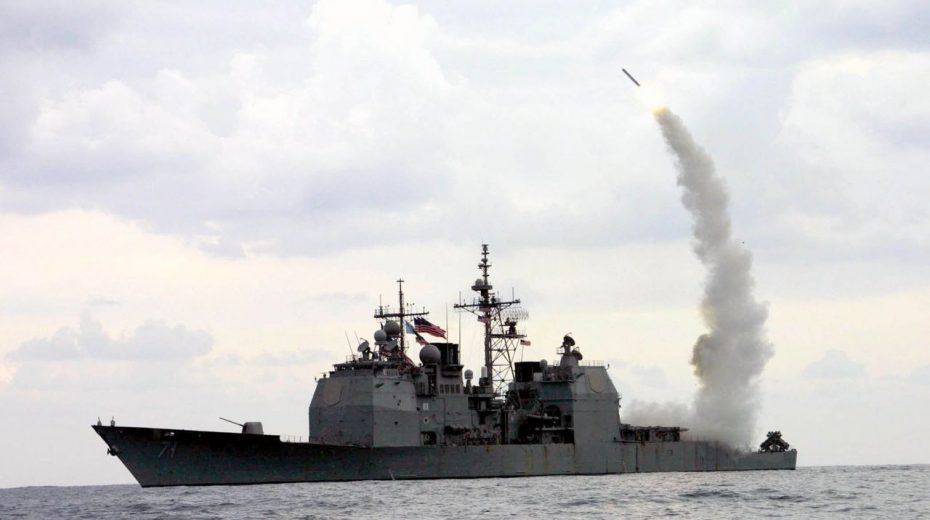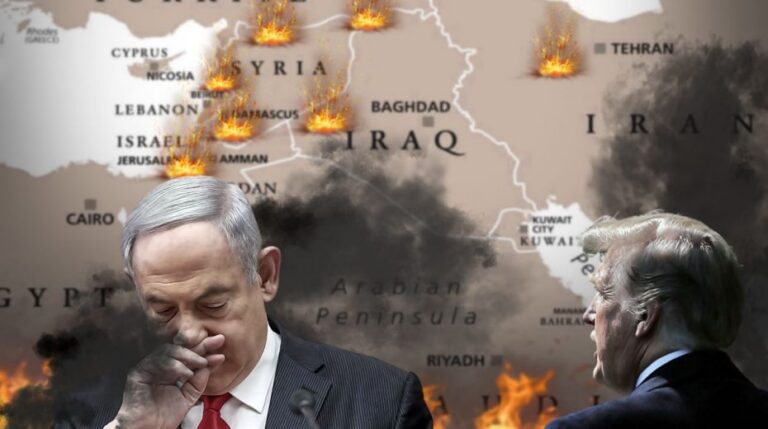
The recent developments signify an intensified phase in the imperialist military aggression against Russia and steps toward prepping for a potential third world war. The European Council’s meeting in Brussels on Thursday and the “Coalition of the Willing” summit in London on Friday were far from routine diplomatic encounters—they served as war councils. Collectively, they endorsed fresh sanctions, increased military support for Ukraine, and unveiled a “Defence Readiness Roadmap 2030,” outlining a five-year strategy to militarize the entire European continent.
Meanwhile, the United States has deepened its direct engagement. Under the Trump administration, key restrictions on Ukraine’s deployment of Western-provided long-range missiles were removed, allowing Kiev to launch strikes into deep Russian territory. On Tuesday, Ukraine targeted a Bryansk facility producing explosives and rocket fuel with a British-supplied Storm Shadow cruise missile. The Ukrainian general staff hailed this as a “successful hit.” Such actions heighten the danger of an open clash between NATO and Russia, which could swiftly escalate into nuclear conflict.
Washington and its European partners are clearly escalating the war effort. The US and UK both announced new sanctions targeting Russia’s largest oil and gas firms, Rosneft and Lukoil, while the EU committed to intensifying its economic warfare. The Brussels meeting agreed to broaden export bans on dual-use technology, limit Russian access to European capital markets, prohibit 117 Russian “shadow fleet” vessels from EU ports, and introduce additional travel and financial restrictions on Russian diplomats. By 2027, the EU intends to fully ban imports of Russian liquefied natural gas (LNG), a year ahead of schedule.
Even more contentious is the EU’s plan to confiscate and repurpose the frozen reserves of the Russian central bank to finance weapons for Ukraine. Despite legal concerns raised by Belgium, the European Council pressed the Commission to “present a proposal as soon as possible.” This move constitutes outright international theft—an imperialist act signaling to the world that national reserves are vulnerable if they clash with Western interests.
The European Council boasted that since 2022 the EU has supplied €177.5 billion to Ukraine and “commits to meeting Ukraine’s urgent financial needs for 2026–2027, including for its military and defence efforts.” There will be hundreds of billions more to come.
The accompanying Defence Readiness Roadmap 2030 leaves no doubt on the usage of these funds. It opens by stating:
“Defence readiness entails developing and acquiring the capabilities that are needed for modern warfare. It means ensuring that Europe has a defence industrial base that gives it a strategic advantage and the independence needed. And it means being ready to deliver cutting-edge innovation and fast, mass production at critical times.”
This document serves as a manifesto for a European war economy—a coordinated effort involving industry, finance, and technology to increase armament on a mass scale. “The need to speed up and ramp up efforts,” it notes, “reflects the increasing dangers of today.”
Russia is designated as the primary adversary and described as a “persistent threat to European security for the foreseeable future,” yet the plan’s scope is global in nature:
“Europe’s readiness must be rooted in the wider global context with a 360° approach. … We cannot be blind to threats from other parts of the world—from Gaza and the Middle East to several latent or open conflicts in Africa, from increasing tensions in the Asia-Pacific to the Arctic.”
In other words, the EU is gearing up for global conflict to advance its economic and geopolitical aims independently from the US. The plan explicitly notes that “traditional allies and partners are shifting their focus to other regions of the world,” concluding that “Europe’s defence posture and capabilities must … be ready for the battlefields of tomorrow, in line with the changing nature of warfare.”
The Roadmap sets ambitious targets rivaling those of 1930s rearmament programs. It highlights the rise of European defence expenditure from €218 billion in 2021 to €392 billion in 2025 and calls for further acceleration. Under the “ReArm Europe” initiative, as much as €800 billion will be mobilized for armaments through instruments like SAFE. Commitments made at the June NATO summit to reach 3.5 percent of GDP for defence spending by 2035 imply an additional €288 billion annually.
Funding these enormous budgets will demand harsh austerity measures, dismantling social programs, and seizing public resources. The document clarifies that “defence readiness” requires not only finances and armaments but the complete reorganisation of the continent for war. Under the heading “Towards an EU-wide military mobility area,” it proposes:
“By end 2027 an EU-wide military mobility area will be set up, with harmonised rules and procedures and a network of land corridors, airports, seaports, and support elements ensuring unhindered transport of troops and military equipment across the Union, in close coordination with NATO.”
This aims to convert Europe into a unified combat zone—an integrated logistics region facilitating unhindered troop and equipment movement from the Baltic Sea to the Black Sea. Civilian infrastructure is being subordinated to military priorities. Military exercises like Red Storm Bravo in Hamburg, which coordinated deployment of tens of thousands of NATO soldiers and involved operations against antiwar protesters, already anticipate the internal implications of this militarisation: the repression of dissent.
Germany is leading this transformation. Backed by the Greens and Left Party, the government coalition has established a trillion-euro framework for rearmament. The 2025 defence budget amounts to €86.5 billion—the highest since World War II—and is projected to exceed €150 billion by 2029, about 3.5 percent of GDP. Including infrastructure related to “military readiness,” the total military expenditure will approach 5 percent of GDP, roughly €215 billion annually.
Thousands of new military and civilian positions are being created alongside reinstating conscription. Billions are directed toward manufacturing fighter jets, transport helicopters, new tanks, armoured vehicles, warships, drones, missile systems, and even a dedicated space command. Chancellor Friedrich Merz has openly announced plans to make Germany the “strongest conventional army in Europe.”
These developments echo Germany’s preparations in the 1930s, when ambitions for rearmament and global domination led to the establishment of a fascist regime, suppression of democratic freedoms, and repression of the working class. The same process is occurring anew. Across Europe, ruling elites are fostering fascist groups—Farage in Britain, Le Pen in France, Meloni in Italy, and the AfD in Germany—to quell social unrest and ready populations for conflict.
The underlying trends are obvious. The merging of the EU, NATO, and the arms industry into a single war apparatus coincides with a slide toward authoritarianism. The crackdown on democratic rights, the criminalisation of protests against the Gaza genocide, and the militarisation of police forces all reveal ruling class fears of widespread resistance.
The contradictions pushing imperialism toward war—most notably the profound crisis of capitalism—also create the conditions for revolutionary upheaval. The massive transfer of wealth to armaments, destruction of living standards, and growing nuclear threat will fuel opposition among workers worldwide. In the US, over 7 million people participated in the “No Kings” protests against Trump’s fascistic policies on October 18. In Europe, strikes and demonstrations have erupted in various countries including Greece, Belgium, Italy, the Netherlands, and France opposing austerity and militarism. These signal a global resurgence of class struggle.
However, spontaneous dissent is inadequate. It requires a deliberate political direction linking the fight against war and authoritarianism to the struggle against their root cause: the capitalist system itself. In 2016, the International Committee of the Fourth International (ICFI) outlined in its statement “Socialism and the Fight Against War” the principles that remain urgently relevant today:
- The antiwar struggle must be grounded in the working class, the key revolutionary force, uniting all progressive layers of society.
- The new antiwar movement must be socialist and anti-capitalist, as genuine opposition to war depends on overthrowing the dictatorship of finance capital and dismantling the economic system underpinning militarism.
- It must be absolutely independent from, and opposed to, all parties and organizations representing capitalist interests.
- Above all, it must be international, mobilizing the working class globally in a united fight against imperialism.
The challenge for workers, youth, and intellectuals across Europe and beyond is clear: establish independent rank-and-file committees in workplaces and communities, connect their efforts across borders, and promote a conscious revolutionary leadership advancing socialism—embodied by the Socialist Equality Parties as divisions of the ICFI. Only by toppling capitalism and creating the United Socialist States of Europe, as part of a socialist world federation where planetary resources are managed democratically and for human needs, not profit, can humanity evade the catastrophe of world war.
Original article: World Socialist Web Site




